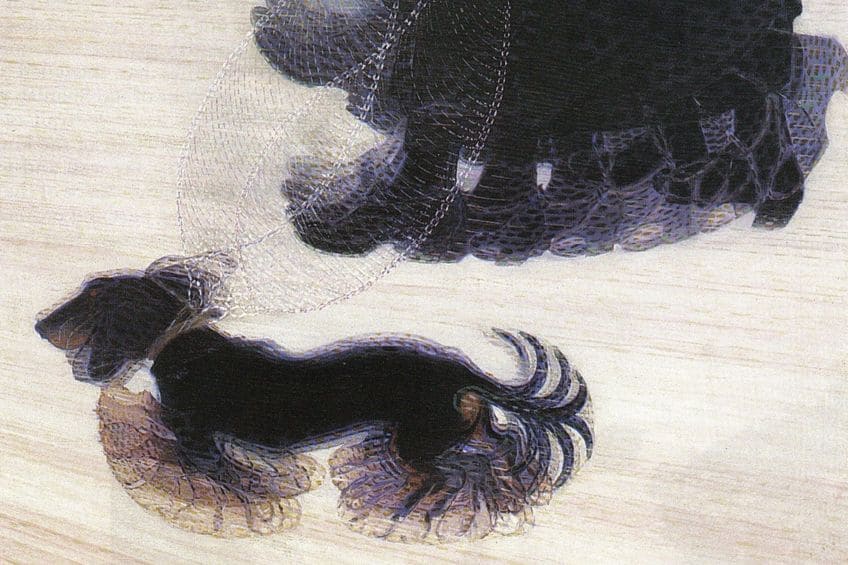Modern Art – Discover How Art Is Changing in the Modern Age
What is Modernism art and what did the Modernists believe in? The Modernist movement wanted to create new types of art and philosophies which would reflect the industrial world that was starting to emerge around them, and explore associated themes such as new technologies, architecture, urbanization, and war. Modernist artists sought to eschew the outdated traditional art forms which they regarded as obsolete. Today, we shall explore the world of Modern art and its impact on the world.
Contents
What Is Modernism Art?
The Modernist movement rejected realism’s ideologies and utilized existing works through the use of repetition, assimilation, reinterpretation, modification, and satire. Modernist art also challenged certain unwavering assertions of the Enlightenment era and many modernists also abandoned religious beliefs. Modern art is characterized by a self-consciousness awareness about social and artistic traditions that typically led to structural experimentation and the adoption of methods that brought attention to the materials and methods employed in producing Modernism paintings and other media. In the 21st century, the movement would evolve into High Modernism, while Postmodernism rejected the Modernist movement’s core principles.
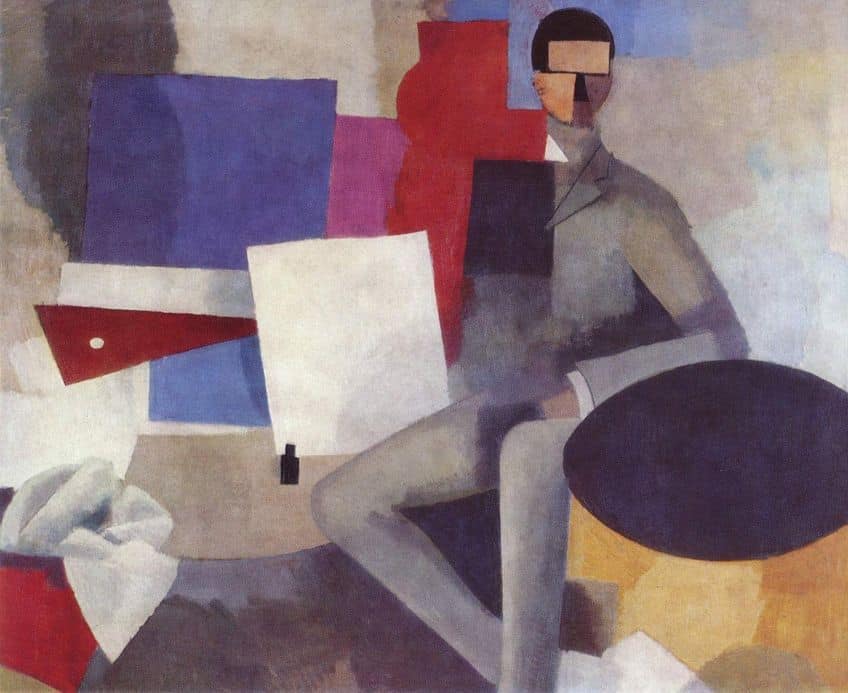
The Modernism Definition
Some scholars interpret Modernism as a way of thinking – a philosophically defined aspect, such as self-reference or self-consciousness, that flows through all of the various disciplines of the Modernists. More often, particularly in the West, the Modernist movement is regarded as a progressive social movement that emphasizes human beings’ ability to develop, enhance, and transform their surroundings through practical experiments, and knowledge of science and technology. From this viewpoint, Modernism promoted the re-examination of all aspects of life, from industry to ideology, with the purpose of determining what was inhibiting advancements in society and replacing it with new methods that would streamline the process.
Modernism tried to reintroduce a feeling of transcendent order and significance to the modern world, hoping to counteract the perceived degradation of society caused by what many saw as modernity’s secularizing and fragmenting influence.
A Brief History of Modern Art
Many significant advances in the visual arts developed in the centuries preceding the modern era. Yet, an idealization of subject matter, whether natural, human, or contextual, was a recurring feature throughout the early modern ages. Artists often depicted what they regarded as the essence of their subject, instead of what they experienced with subjective eyes.
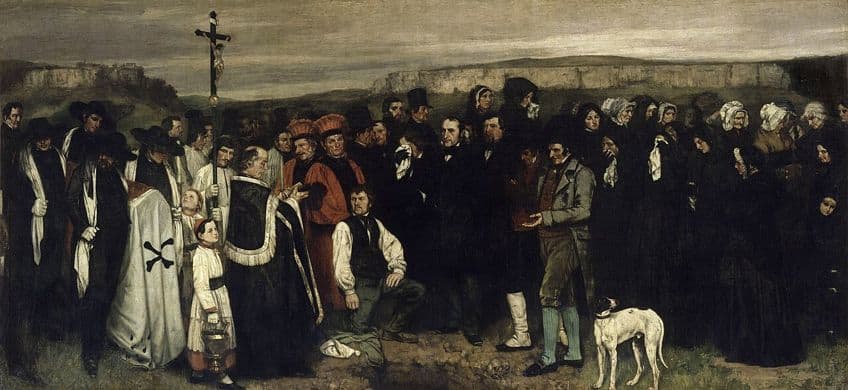
The Emergence of Modernism
The modern period began in the mid-19th century with the arrival of the Industrial Revolution in Western Europe, one of the most pivotal moments in human history. The development and widespread availability of technology such as the internal combustion engine, massive machine-powered enterprises, and urban electrical power generation revolutionized the quality and pace of life dramatically. To find work, many people moved from rural areas to urban areas, shifting the common way of life from an agricultural lifestyle toward working and residing in growing metropolises.
As a result of these advancements, many artists were attracted to these new visual environments, which were now buzzing with a wide range of modern sights and styles.
The Impact of Photography
Photography was an important technical advancement that was connected to the visual arts. Within just a few decades, complete realism could be reproduced in any subject matter because of the rapid advancements in photographic technology. As technology advanced, camera equipment became more accessible to the entire population. Because neither paintings nor sculpture could achieve the same level of realism as photography, the medium posed a significant threat to traditional forms of artistic subject portrayal. Because of the realism of photography, artists were compelled to find new forms of expression, which resulted in new art modes and paradigms.
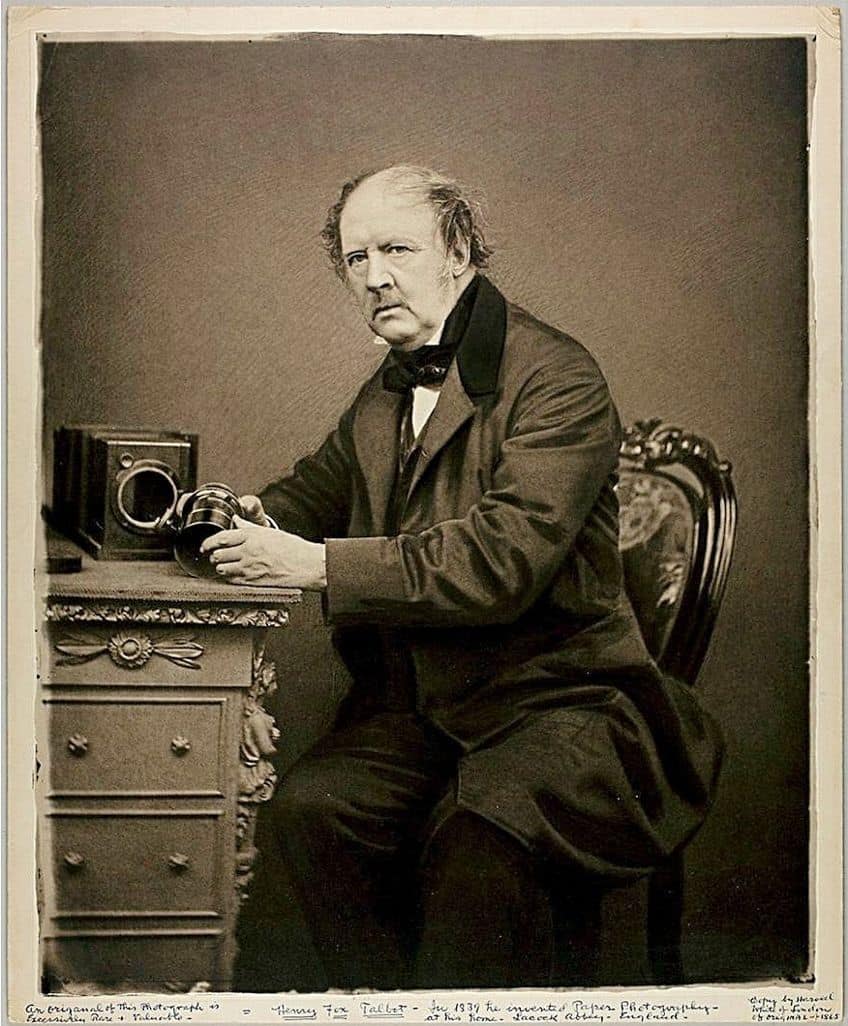
The Artist’s Perspective
Modernists have strived to portray their perceptions of the world around them through visual means. While some artists have associated their works with previous movements or concepts, the overall objective of each Modernist artist has been to elevate their technique to a position of absolute individuality. Some artists positioned themselves as free thinkers, deviating from what was considered suitable styles of “high art” at that time, as promoted by established state-run institutions and elite patrons. These pioneers portrayed content that many people thought was vulgar, provocative, or even downright unpleasant.
Gustave Courbet, who attempted to establish his own unique style in the mid-19th century, was the first modern artist to successfully stand on his own in this respect.
This was most exemplified by his artwork, Burial at Ornans (1850), which outraged the French art establishment by depicting the funeral of a commoner from a rural village. The portrayal of filthy farm laborers surrounding an exposed grave enraged the Academy, as only classical stories or historical events were appropriate subjects for such a large artwork. Courbet was first ridiculed for his works, but he subsequently had a major influence on future generations of modernists. Countless artists in the modern era have experienced this same story of rejection and subsequent acceptance and even reverence.
The Characteristics of Modern Art
Modernism art refers to a broad range of methods, styles, and mediums. Yet, the core defining characteristics of the movement’s art remain an abandonment of the past and traditional ideas such as realism, an embracing of experimentation and innovation, and a focus on new materials and processes. Another prevalent aspect of Modern art was self-consciousness as it connected to art and societal traditions, which drove artists to innovate with form. Techniques that drew attention to the creative processes and the materials utilized were also prevalent throughout the time period. Let us now look at a few of the characteristics of Modernism art in a bit more detail.

Breaking Away from Tradition
Modern art differentiates itself by deviating significantly from traditional styles and techniques. Traditional art styles were centered on lifelike representations of nature and typically followed rigid rules and practices that had been defined over centuries. Modernists, on the other hand, attempted to diverge from these traditions by producing Abstract Modernist art. Impressionist artists’ artwork is one illustration of straying away from established styles and techniques. They called into question the very definition of art and would have a huge influence on the Modernists. They disregarded conventional perspective and realism preferring a loose, more impressionistic aesthetic.
As a result, new approaches, such as the use of color and light to express a sense of atmosphere and mood, were developed.
A Greater Emphasis on Individual Self Expression
Individuality and self-expression are valued highly in modern art. During this time period, Modernists strove to produce works that expressed their own individual views and experiences. This emphasis on the individual resulted in the creation of new styles and approaches that were very individualized and typically profoundly introspective. Vincent Van Gogh’s art is an early illustration of this focus on individuality. His artworks were deeply personal, sometimes depicting his own experiences with mental illness. He established a distinct style that was distinguished by vivid colors, broad brushstrokes, and profoundly personal emotional intensity.
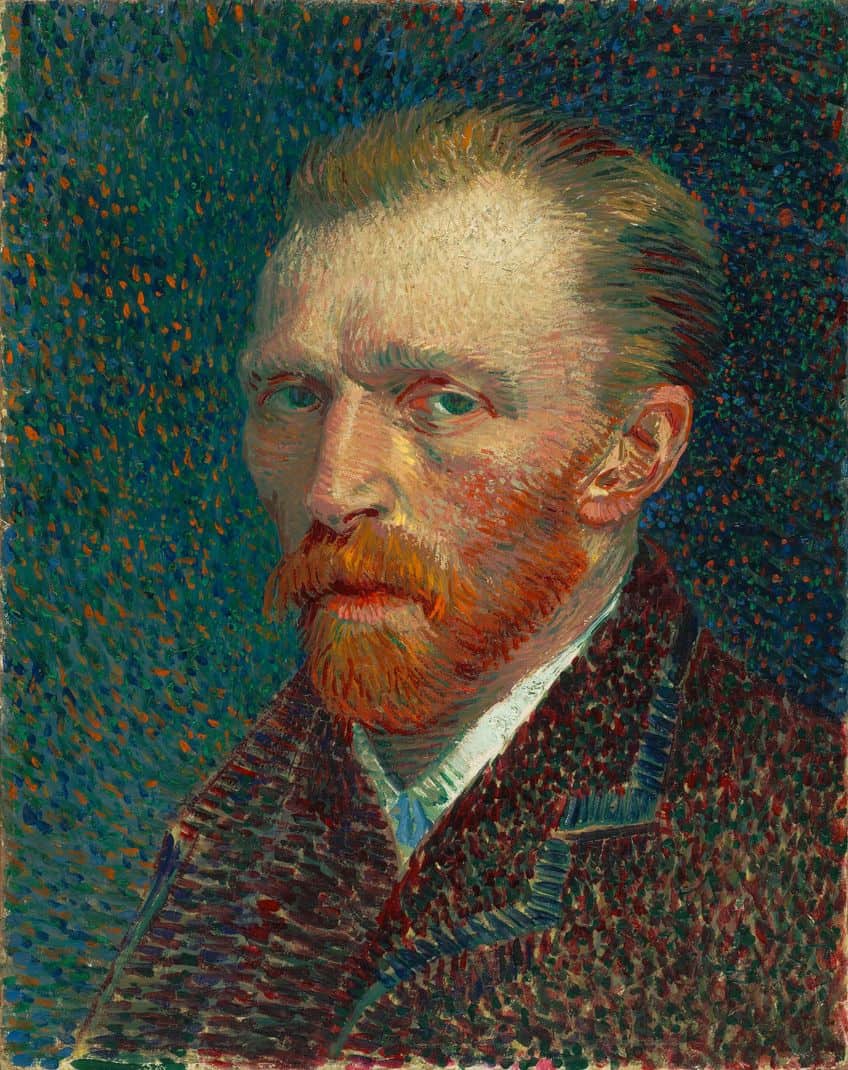
Experimenting With Unique Techniques and Mediums
Modernism art is also characterized by its experimentation with new techniques and mediums. Artists of this era were not satisfied with the usual materials of their craft and aspired to test the boundaries of what was achievable. They tried out different materials including industrial materials and plastics, as well as new techniques like assemblage and collage. Pablo Picasso’s art is an example of this exploration of different materials and techniques.
Picasso was well-known for his utilization of assemblage and collage, which he used to produce intricate and layered artworks. He often incorporated found objects, such as newspaper clippings or fabric patches in novel ways.
An Interest in Real-World Issues
Modern art displays a significant interest in the modern world and contemporary challenges. Artists of this era were actively involved with political, social, and cultural concerns of the day, and they attempted to use their Modernism art to comment on and critique the society around them. Pop art is an example of this concern with the current issues. They were inspired by popular culture, including advertising and mass media, and regularly produced pieces that were strongly critical of the time’s consumerist lifestyle. Their works were distinguished by humor and a desire to criticize modern society’s ideals and ideas. However, there are those that argue that Pop art actually celebrated consumerism, much in the same way that Modern art celebrated advancements.

Modern Art Movements
Art history tends to categorize individuals into groups of like-minded and contextually related artists known as schools or movements. This basic method of categorization is especially applicable to centralized movements with a single goal, such as Impressionism, Minimalism, Futurism, Surrealism, and Pop art. For instance, when Claude Monet’s work Impression, Sunrise (1872) was shown as part of a collective exhibition in 1874, both the artwork and the exhibit as a whole were poorly reviewed. Yet, this criticism eventually propelled and unified Monet and his fellow painters.
Consequently, the Impressionists established a precedent for future independent-minded artists who aspired to form groups based on a single vision and artistic approach.
This technique of categorizing artists into distinct movements is not always appropriate or suitable, since many movements include a vast range of artists and styles. Additionally, some artists do not fit well within any one movement or group. Amadeo Modigliani, Auguste Rodin, and Marc Chagall are only a few examples of artists that defied easy categorization. Despite these complexities, the imprecise classification of movements enables the enormous history of modern art to be divided into smaller sections separated by contextual elements that help in the examination of specific artists and artworks.
Abstract Modernist Art
Abstract Expressionism’s influence on Modern art cannot be overstated. It brought into question established assumptions of what art should be and provided new opportunities for Modernists to express themselves artistically. It also helped to propel New York City to the forefront of the art world, as artists rushed to the city to be a participant in the exciting and growing movement. Following the end of World War II, Abstract Expressionism developed as a dominating art trend in the United States in the mid-20th century. It is distinguished by the use of non-representational painting methods that focus on communicating the artist’s thoughts and emotions instead of representing identifiable objects or individuals. Abstract Expressionist painters eschewed the academic traditions of European art in order to create a new style that mirrored the social and cultural changes of the era.
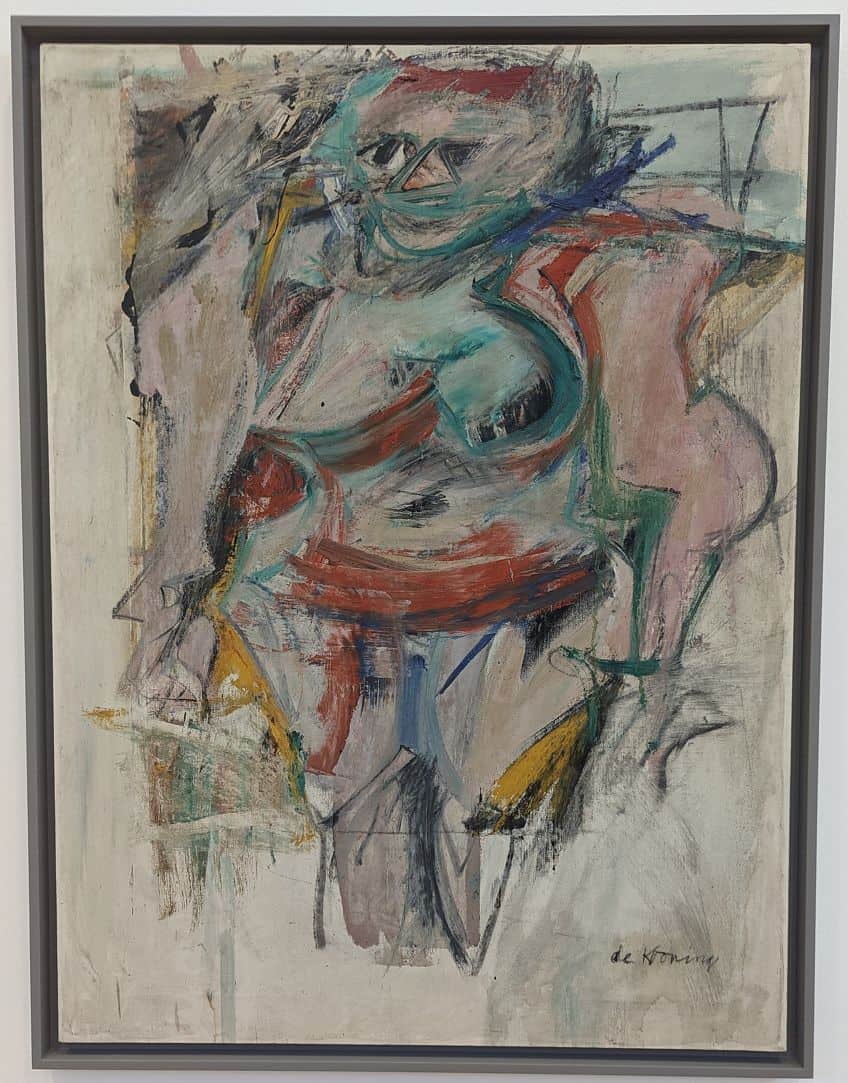
In their works, they embraced a sense of spontaneity and freedom, usually letting their subconscious lead the production of their art. This culminated in Modernism paintings with powerful, sweeping brushwork, droplets, and splatters that created a feeling of motion and vitality on the canvas. Action Painting, one of the Abstract Modernist painting genres, is defined by dynamic brushwork and expressive gestures that evoke a feeling of motion and energy. Willem de Kooning and Jackson Pollock are two well-known artists associated with this approach. Color Field Painting is another style of Abstract Modernist art that employs broad, flat expanses of color to provide a tranquil and introspective experience for the observer.
Artists associated with this genre include Barnett Newman and Mark Rothko.
Pop Art
Pop Art started as an art trend in Britain and America during the 1950s and flourished in the 1960s. The movement originated as a reaction against traditional art forms and was influenced by commercial and popular culture in the Western world. Pop artists believed that art displayed in museums or taught in classrooms did not accurately portray the actual world, therefore they turned to modern mass culture for inspiration. Pop Art was dubbed “anti-art” at the peak of its popularity because it refused to adhere to contemporary art standards at that time. Pop Art is typically distinguished by its use of iconic, consumer icons, whether they are everyday things like Andy Warhol’s Campbell’s Soup Cans (1962) or legendary personalities like Marilyn Monroe in Marilyn Monroe I (1962), by James Rosenquist, another important advocate of the movement.

Pop artists created imagery that everyone passing down Broadway could know in an instant – cartoons, picnic tables, men’s slacks, superstars, appliances, Soda cans, and everything else that artists had previously avoided in their works. Branded or commercial iconography is, in fact, a crucial Pop Art motif. The concept that art might be informed by everything and anything, not only mythology, or morality, was emphasized by the use of logo designs or impersonal symbolism. Bold colors, particularly the primary colors of blue, red, and yellow, are frequently associated with pop art.
Typically, the colors were vivid and it appeared as if they belonged in a comic strip.
Minimalism
By eliminating all traces of biography or metaphors of any type from their works, the minimalists set themselves apart from the Abstract Expressionists. This limitation on expressiveness, along with a desire to create pieces that don’t seem like high art, gave rise to sleek, geometric pieces that consciously and completely reject the traditional aesthetic appeal of previous art styles. Many artists abandoned painting and sculpture in favor of objects, challenging the conventional definition of what constitutes an artwork. Minimalism grew in popularity in the early 1960s as a result of a number of variables, including increased interest in the art market and gallery curators; publications; and, finally, a new patronage structure. Minimalists were opposed to the notion of an art piece as the unique reflection of a talented individual; this notion was viewed as a distraction from the work itself.
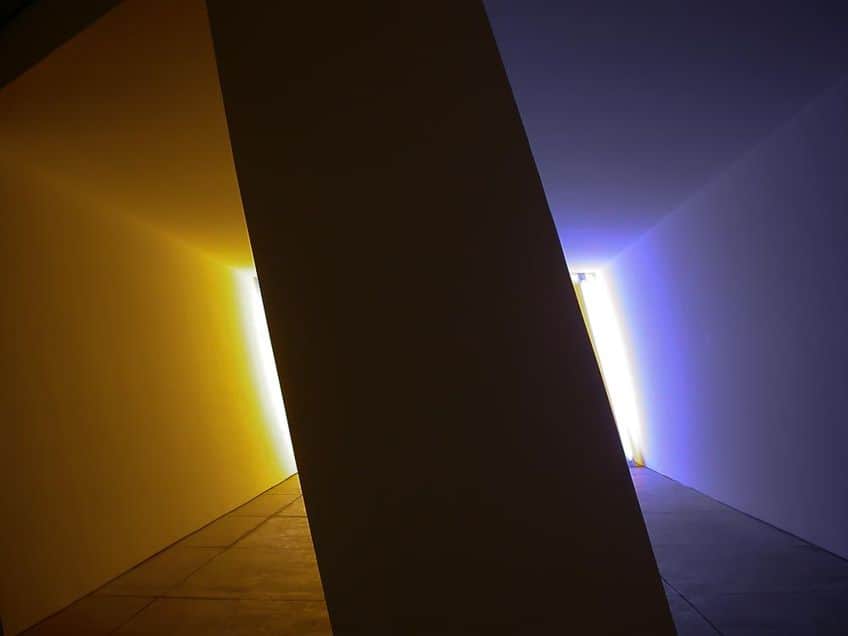
Minimalist art’s aesthetics reflect the creators’ intention: pure forms of beauty embodying traits such as symmetry, purity, honesty, and authenticity, in the sense of not claiming to be something other than what it is. Many Minimalists’ decisions illustrate the redefinition of art. Minimalists favored the use of commercial materials and industrial production for their artworks, inspired by Marcel Duchamp’s ready-made and Russian Constructivism. This made it possible to remove any traces of authorship, such as brushstrokes, and the artist’s hand.
Additionally, they employed fiberglass or home paint, which were seen as being without value and inexpensive. Colors just defined space instead of conveying emotions or moods.
Surrealism
Surrealism also had a big influence on modern art. It arose in the 1920s as an art movement and was heavily influenced by Carl Jung’s and Sigmund Freud’s psychoanalytic theories. It opened the door for innovative kinds of creative expression and challenged common assumptions about what art could depict. It has had a significant influence on a broad range of other aesthetic styles, including Pop Art and Abstract Expressionism. It is defined by the use of surreal, otherworldly imagery that pushes the limits of perception and reality. Surrealist painters attempted to investigate the machinations of the subconscious mind, as well as the illogical, often suppressed urges and anxieties that it held.
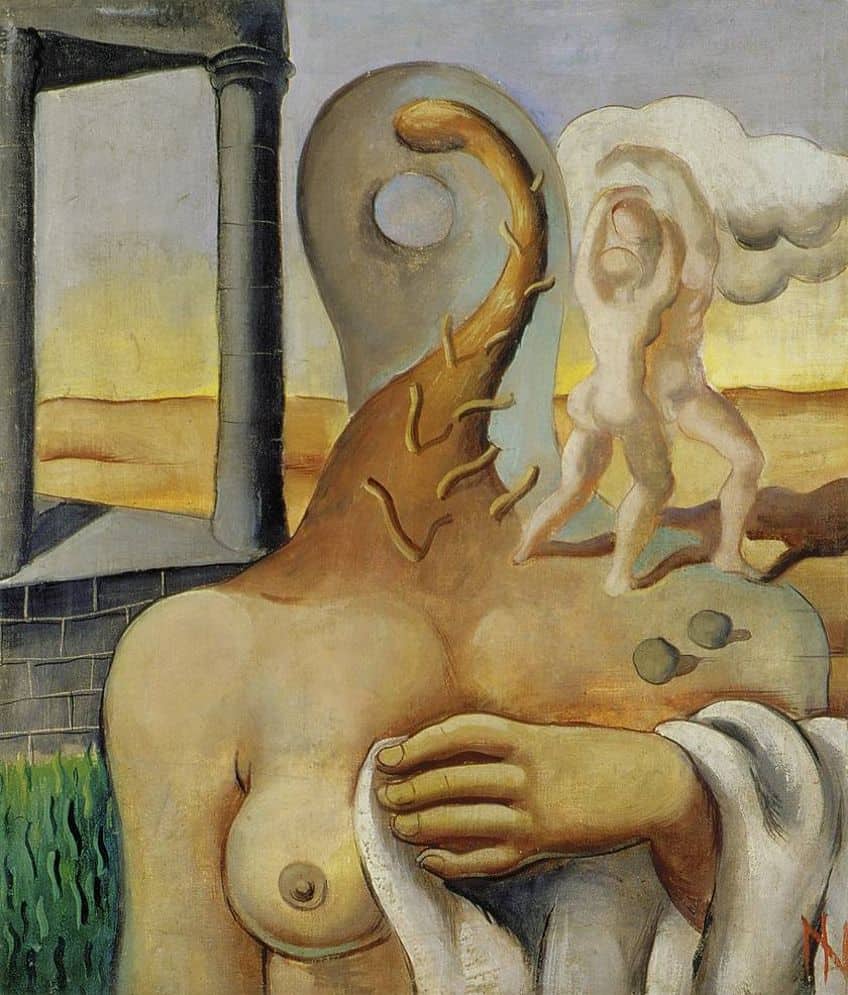
Surrealist artwork is typically distinguished by surprising juxtapositions, in which seemingly unconnected things are juxtaposed to generate a feeling of bewilderment and mystery. Salvador Dali is a well-known Surrealist whose artwork is marked by strange, often gruesome imagery and a study of the subconscious. Surrealist filmmakers attempted to translate Surrealist ideals to the screen, utilizing approaches such as dreamy imagery, non-linear storylines, and surprising visual effects to evoke a feeling of apprehension and confusion. Surrealism also had a big effect on the fashion industry.
Designers worked together to create strange apparel and accessories, such as lobster-shaped skirts and hats for shoes.
Futurism
Futurism is a social and artistic avant-garde movement that emerged in Italy. The Manifesto of Futurism, issued in 1909 by Filippo Tommaso Marinetti, is a crucial document in the formation of the Futurism movement. In the aftermath of futurist philosophy, several manifestos were written. All of these manifestos had an uncompromising stance against the past while glorifying the cult of youth, industry, mobility, technology, and modernity, and frequently highlighting the violent component of the battle for cultural and broader societal change.
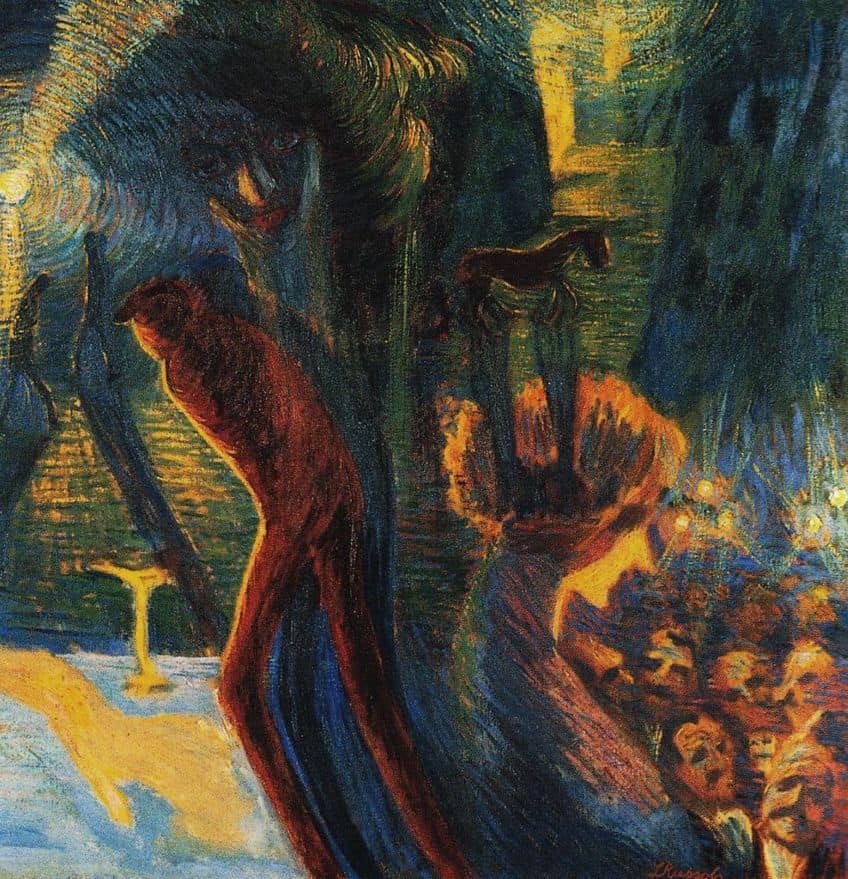
The abandonment of traditional cultural value frameworks, the pursuit of art liberated from the burden of its past, the emphasis on youth as a crucial factor in social development, a preoccupation with technology, the modernization of urban areas, and the vibrancy of industrial facilities are all characteristics of futurism. Futurism had a big influence on the advancement of graphic design and advertising, too. Billboards and other visual forms of communication were affected by their strong, kinetic imagery and focus on movement and sophisticated technology. Futurism expressed itself through literature, sculpture, painting, industrial design, architecture, film, music, dance, and fashion.
One of Futurism’s most important contributions to modern art was its emphasis on the item as an artwork in its own right, instead of as a depiction of something else.
Modern Art’s Impact on Society
Modern artists often strove to reflect the societal and cultural changes that were occurring in the world around them. In doing so, it would impact the various social justice movements and prevalent politics of the time. Contemporary cultural and aesthetic values were also shaped by Modernists. Below, we will explore these factors in more depth.
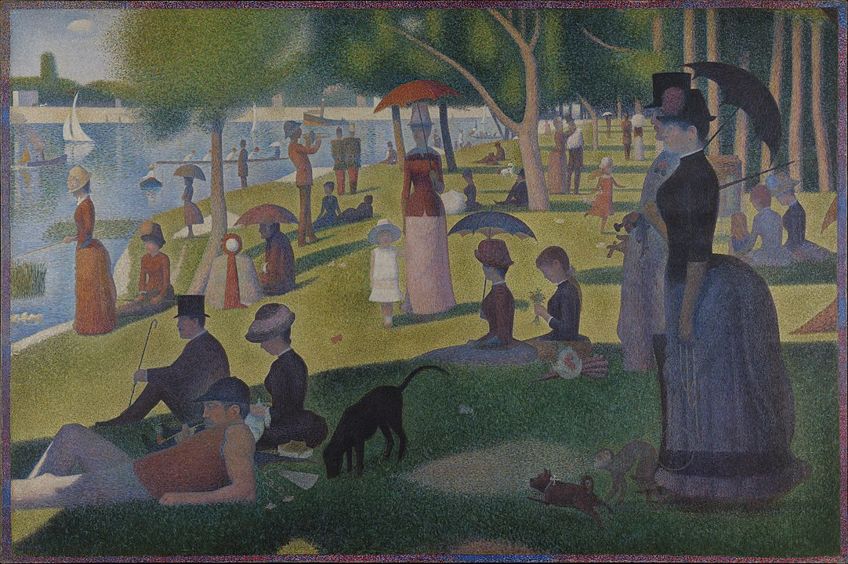
A Reflection of Changes in Society and Culture
Modernism art played an important role in expressing the cultural and social transformations that happened in the 19th century and early 20th centuries. It was a period of significant political, social, and technical transformation, and Modernists strove to portray these advancements in their works. Modernist art also mirrored changes in society and culture by adopting modern technology and media.
The evolution of photography and cinema had a significant influence on the art world, and Modernists embraced these new mediums to produce works that disrupted and challenged the old methods of representation.
The Modernist movement also represented the shifting social roles of minorities and women. Artists like Jacob Lawrence and Georgia O’Keeffe utilized their works to address race and gender issues, reflecting the early 20th century’s increasing social awareness of these issues. Society was becoming increasingly more industrialized and new technologies were emerging every day that resulted in an increasingly faster-paced world. Modern art sought to capture the essence of this heady period of rapid development and change.
The Role of Modern Art in Politics and Social Justice Movements
Throughout history, modern art has played an important part in many political and social justice movements. Artists’ works have been utilized to promote political beliefs, provide social commentary, and question the status quo. This resulted in the emergence of various art styles intimately associated with social and political action. The Soviet Union’s government-sponsored socialist realism, which intended to represent the Soviet Union as a Utopian paradise and promote communist values, is one of the most notable examples of modern art’s engagement with politics. Several Modernists who did not agree with the dictatorship’s philosophy, gravitated to abstract art, believing that it could convey the same ideas without openly supporting the regime.

Following World War I, many artists abandoned the conventional beliefs of their forefathers, who championed nationalism, empire, and war. Rather, they embraced nonviolence, internationalism, and anti-colonialism, and utilized their work to confront and advocate change. Similarly, throughout the 1960s and 1970s in the United States, art became an important weapon for social justice movements. Artists used their works to oppose systematic racism and gender injustice during the civil rights and feminist movements.
Black artists such as Romare Bearden, Jacob Lawrence, and Faith Ringgold made works that recorded African Americans’ challenges and successes, whilst feminist artists such as the Guerilla Girls and Judy Chicago criticized patriarchal conventions and fought for gender equality.
Modern art has been used to promote awareness and confront perceptions of social and political topics, as well as serve as a tool for activism. For instance, in the 1980s, the government and many mainstream organizations responded to the AIDS epidemic with apathy and indifference. Artists such as Nan Goldin, Keith Haring, and David Wojnarowicz responded by creating artworks that drew attention to the issue and addressed stigmatizing views toward individuals living with AIDS.
Shaping the Era’s Cultural and Aesthetic Values
Lastly, Modern art also had a significant influence on the cultural and aesthetic values of the age in which it arose, overturning established artistic traditions and clearing the way for new forms of creative expression. Moving away from the visual realism that had characterized art for centuries was one of the most fundamental ways in which modern art changed aesthetic values. Abstraction was pioneered by artists such as Matisse, Picasso, and Braque, who prioritized form, color, and line above realistic pictures of the world. This shift toward abstraction reflected contemporary society’s rising focus on independence and subjectivity, as well as the expanding influence of technologies and science on daily life.
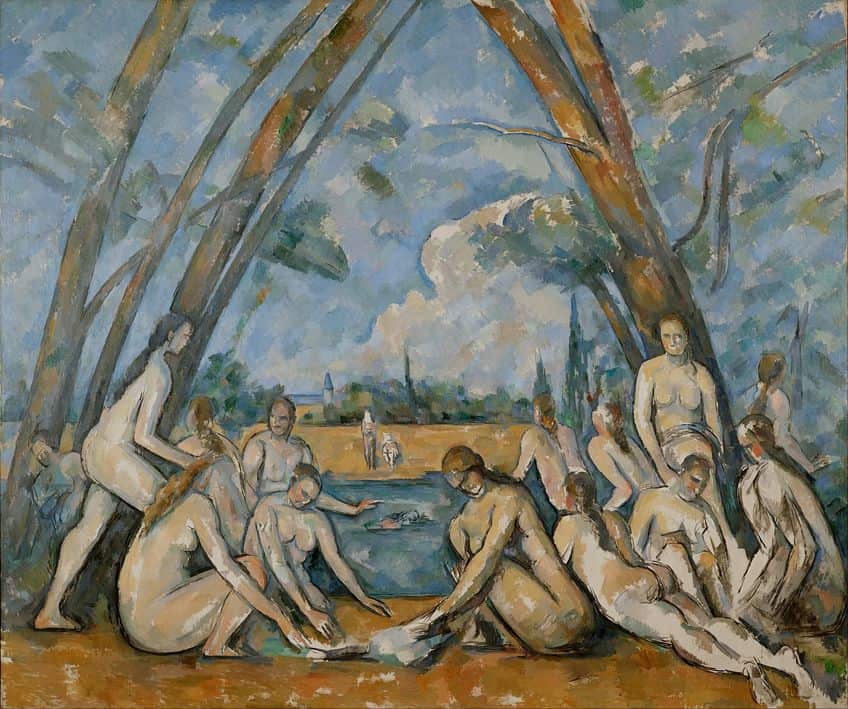
They also examined new approaches that rejected traditional ways of preparation and execution, such as automatic sketching and other types of spontaneous creation. Lastly, contemporary art had a large influence on popular culture and how people consumed art. With the emergence of mass media and new technologies including photography and video, art was able to be distributed more widely, making it more accessible to a broader audience. This resulted in cultural democratization, as individuals from all types of backgrounds were able to participate in and enjoy modern art.
Modern Art Controversies and Criticisms
The Modernist movement has often been criticized for producing works that lack any substance or that do not require much skill to create. Others lament the commercialization of Modern art, and how this has affected its authenticity as an art form. Subsequent movements, such as the Postmodernists turned their back on the Modernists and developed new styles in reaction.
Let’s explore these criticisms further.
Modern Art Lacks Meaning and Substance
Critics who contend that contemporary art lacks significance and depth usually point to the abstract and non-representational quality of modern art. They claim that modern art is meaningless and communicates nothing of value to audiences if it lacks recognizable subjects or themes. Some critics also contend that contemporary art is excessively focused on invention and experimentation and that its incessant quest for new forms and methods sacrifices substance and meaning.

They argue that contemporary art is more preoccupied with being avant-garde and cutting-edge than it is with connecting with real concerns or expressing a deeper meaning. Modernists, though, reject the notion that modern art is devoid of purpose and depth. They say that modern art is not constrained by old representational and narrative standards and that it may express a wide range of thoughts and emotions through shapes, colors, textures, and other non-representational qualities. Modernists also contend that modern art’s ongoing experimentation and invention are crucial to its meaning and relevance.
They argue that Modern art represents the dynamic, ever-changing nature of modern society and serves as a means of communicating with and reacting to the modern world’s complexity.
Furthermore, Modernists think that the value of art comes in its ability to challenge people and inspire their imaginations, rather than in its ability to mirror reality or convey a concise message. They believe that because much of Modern art is abstract, viewers can connect with it on a more intimate and subjective level, drawing their own interpretations and meanings from it.
The Commercialization of Modern Art Has Stripped It of Authenticity
Critics who claim that the commercialization of contemporary art has robbed it of its authenticity point to how the art market has become dominated by affluent collectors, auction houses, and galleries that value profit over artistic integrity. They believe that the high pricing and marketability of some artists and artworks have resulted in a homogeneity of the art industry, with many artists feeling compelled to make pieces that would sell instead of those that authentically convey their creative vision. They also refer to how celebrity culture has increasingly affected the art industry, with artists turning into brands and their artworks promoted as luxury products.
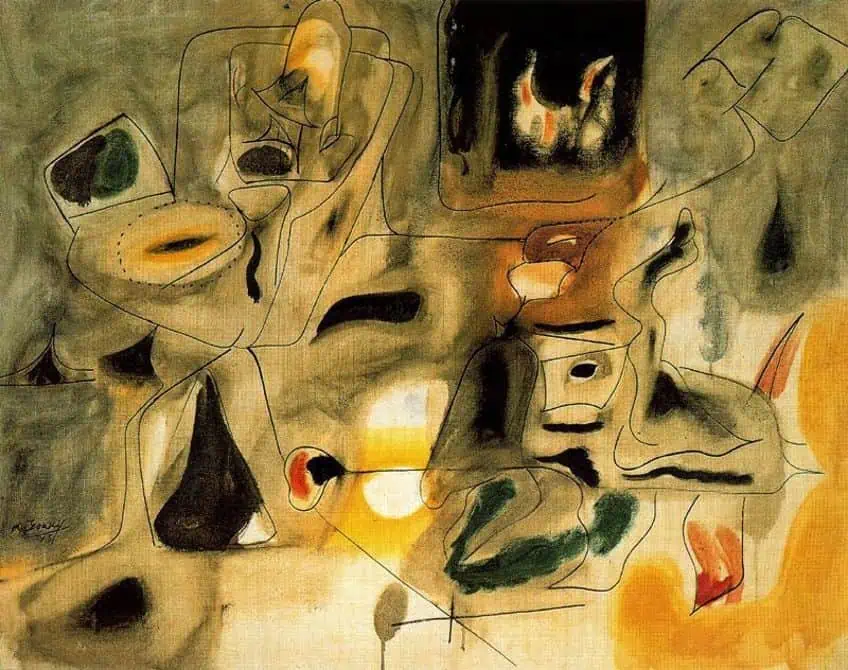
They believe that the emphasis on fame and financial success has damaged modern art’s authenticity and transformed it into a product instead of a method of communication or self-expression. Modernists deny that commercialization has robbed modern art of its authenticity. Some assert that artists have always had to manage the business realities of the art world and that art commercialization is nothing new. Furthermore, they emphasize that the marketability of particular artists and artworks does not always imply a loss of artistic worth or authenticity.
Modernists also believe that the commercialization of modern art has made it more accessible and appreciated by a broader audience.
They believe that the art market has generated a demand for Modernism art, resulting in the formation of galleries and public collections, as well as the ability for artists to earn a living from their work. Moreover, modernists say that the legitimacy of Modern art rests not in its monetary value, but in its ability to convey a distinct vision and question traditions. They argue that the finest modern art is determined not by the art market or collectors’ desires, but by the artist’s own artistic impulses and inquisitiveness.
Making Modern Art Takes No Skill
The abstract aspect of a big section of Abstract Modernist art is sometimes cited by critics as evidence that creating it requires little skill or talent. They believe that modern art lacks the traditional indicators of artistic competence and craft because it does not depict any recognizable topics or technical skills. Additionally, some argue that the process of making modern art is frequently unplanned and spontaneous, necessitating less accuracy and expertise than older forms of art.

They claim that anybody, regardless of education or experience, can create Modern art and that it does not demand the same level of discipline or focus as other traditional types of art. Modernists contend that, while Modern art does not rely on old techniques or accurate portrayal, it necessitates a unique set of skills and expertise. Modernists say that making abstract and non-representational art involves a strong grasp of color, shape, composition, and other components of design. They also argue that the process of making Modern art is equally as demanding and difficult as the process of creating traditional types of art. They believe that the finest modern art is the outcome of a purposeful and intentional process that includes experimentation, modification, and refining, rather than spontaneous creation.
Modernists also emphasize that many contemporary artists have had intensive training and research and that their works are based on a thorough grasp of art history and philosophy.
The Role of Museums and Galleries in Supporting Modern Art
Museums and galleries play an important role in promoting modern art by providing a venue for artists to display their work and by educating and engaging the public in Modern artistic practices. They play an important role in collecting, preserving, and exhibiting Modern artworks. They buy and exhibit works by emerging and renowned artists, as well as build and curate collections that represent the diversity and progress of modern art. They assist to promote the depth and complexity of modern art by displaying a diverse variety of styles and materials, as well as developing critical discourse and interaction.
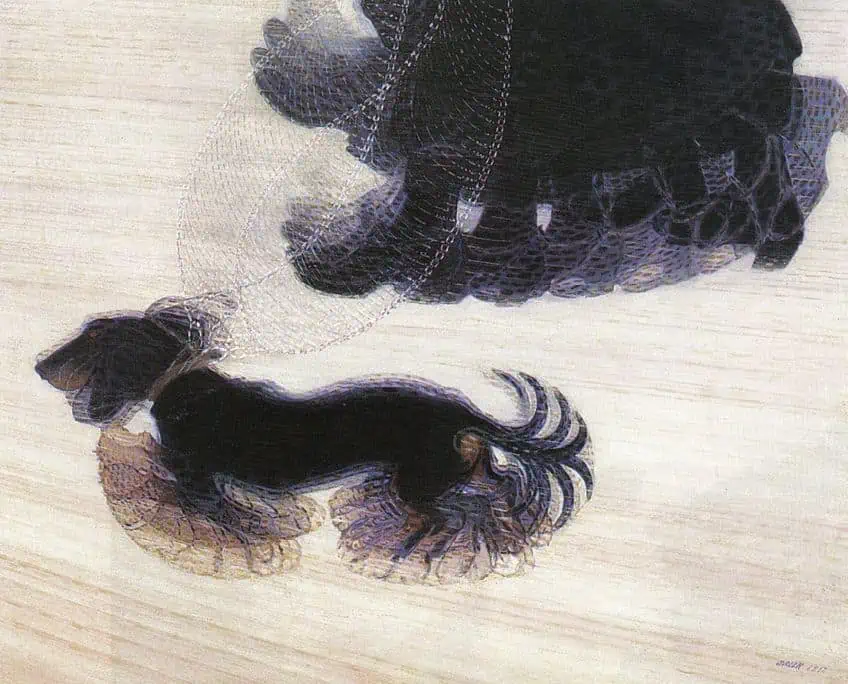
They also play an important role in providing artists with resources and opportunities. They provide residencies, grants, and other programs that enable artists to hone their abilities, try new techniques, and explore fresh concepts. These initiatives give artists tools and networks that they would not otherwise have, helping them to progress their careers and develop new work. Museums and galleries assist to demystify Modern art and create a deeper knowledge and appreciation of its worth and significance by providing opportunities for conversation and reflection. They also influence the direction and development of Modern art. They contribute to the analytical conversation around contemporary creative practices, as well as assist in the identification and promotion of emergent trends and movements. Museums and galleries contribute to defining the future of Modern art by presenting the work of emerging artists, ensuring that it stays a dynamic and vital cultural force.
That concludes our look at the Modernist movement and the impact it had on the world. Modern art is differentiated from traditional forms of art by its experimentation, creativity, and strong engagement with the social, cultural, and historical forces of the moment. It was impacted by a variety of cultural, social, and historical events, such as urbanization, industrialization, scientific progress, and the two World Wars. Modern art, despite criticism and controversy, continues to motivate and challenge artists and viewers alike, influencing our knowledge of art and culture in the modern world. As with all great movements, it was despised and ruffled tail feathers when it first emerged, yet was later recognized for its undeniable contribution to the development of art.
Frequently Asked Questions
What Is Modernism?
Modern art comprises many different styles and movements, such as Expressionism, Impressionism, Cubism, Surrealism, Abstract Expressionism, and Pop Art. While preceding movements were largely preoccupied with portraying objects and scenes in a realistic manner, many Modernist movements preferred to express their inner world in novel ways. They were not afraid to try out unexplored materials and techniques.
What Is the Modernism Definition?
Modernism is a global social and cultural movement that began in the early decades of the 20th century, and pursued a significant transformation with the experiences and ideals of contemporary industrial life. Artists from throughout the world employed new images, materials, and techniques to produce artworks that they believed better reflected the reality and aspirations of modern civilizations, building on late-19th-century predecessors. The words modernism and modern art are often used to denote a series of art trends defined by reviewers and historians, beginning with Gustav Courbet’s realism and concluding in Abstract Modernist art and its developments in the 1960s.
What Is Postmodernism?
Postmodernism is a cultural movement that originated as a response to modernism in the mid-20th century. It is distinguished by a rejection of ultimate facts, great narratives, and established values, in favor of a focus on subjectivity, relativism, and the power of words and speech. Postmodernism is sometimes connected with a rejection of modernist art’s severe formality and abstraction in favor of heterogeneity, appropriation, and deconstruction.
Jordan Anthony is a Cape Town-based film photographer, curator, and arts writer. She holds a Bachelor of Art in Fine Arts from the University of the Witwatersrand, Johannesburg, where she explored themes like healing, identity, dreams, and intuitive creation in her Contemporary art practice. Jordan has collaborated with various local art institutions, including the KZNSA Gallery in Durban, the Turbine Art Fair, and the Wits Art Museum. Her photography focuses on abstract color manipulations, portraiture, candid shots, and urban landscapes. She’s intrigued by philosophy, memory, and esotericism, drawing inspiration from Surrealism, Fluxus, and ancient civilizations, as well as childhood influences and found objects. Jordan is working for artfilemagazine since 2022 and writes blog posts about art history and photography.
Learn more about Jordan Anthony and about us.
Cite this Article
Jordan, Anthony, “Modern Art – Discover How Art Is Changing in the Modern Age.” artfilemagazine – Your Online Art Source. October 19, 2023. URL: https://artfilemagazine.com/modern-art/
Anthony, J. (2023, 19 October). Modern Art – Discover How Art Is Changing in the Modern Age. artfilemagazine – Your Online Art Source. https://artfilemagazine.com/modern-art/
Anthony, Jordan. “Modern Art – Discover How Art Is Changing in the Modern Age.” artfilemagazine – Your Online Art Source, October 19, 2023. https://artfilemagazine.com/modern-art/.


